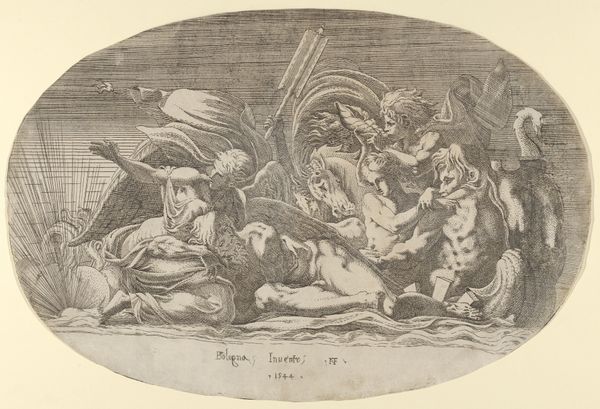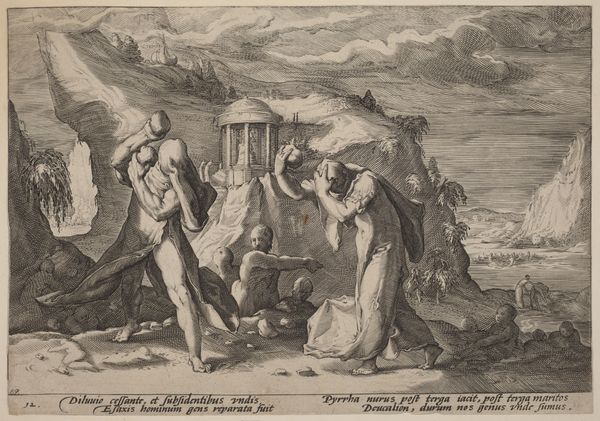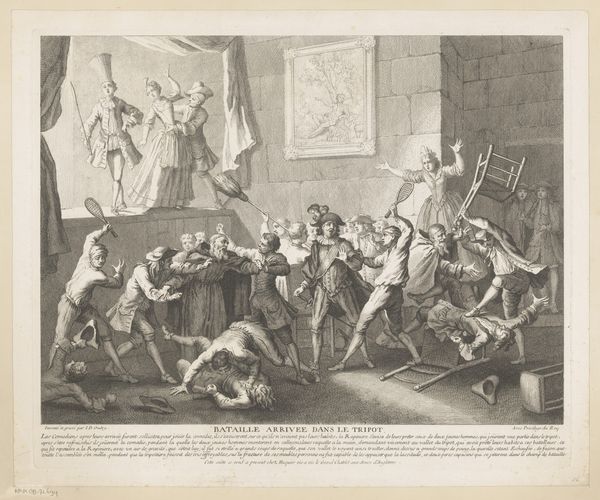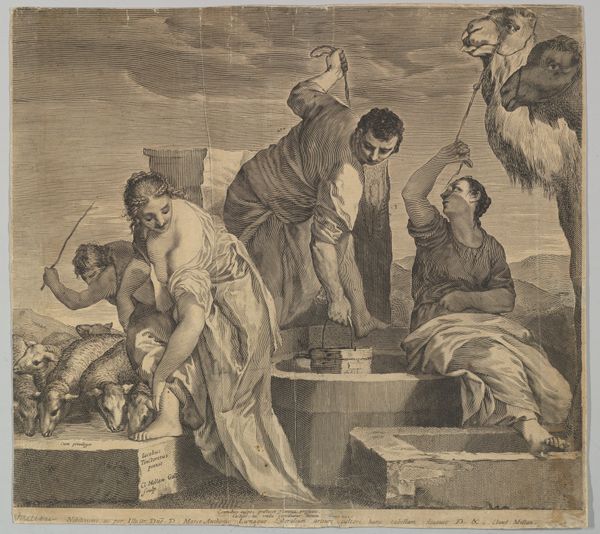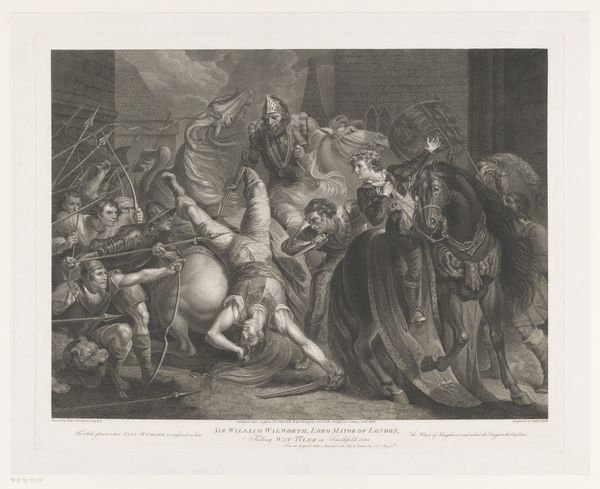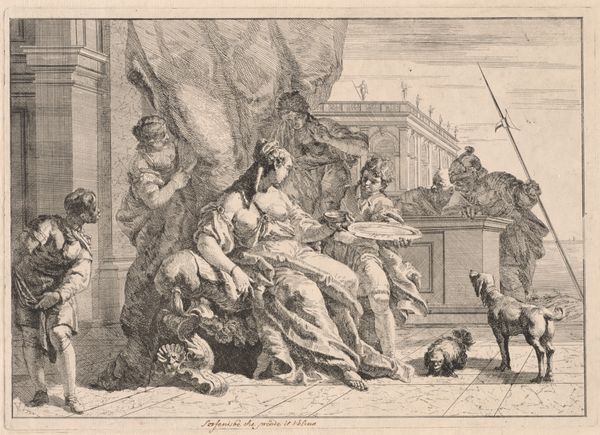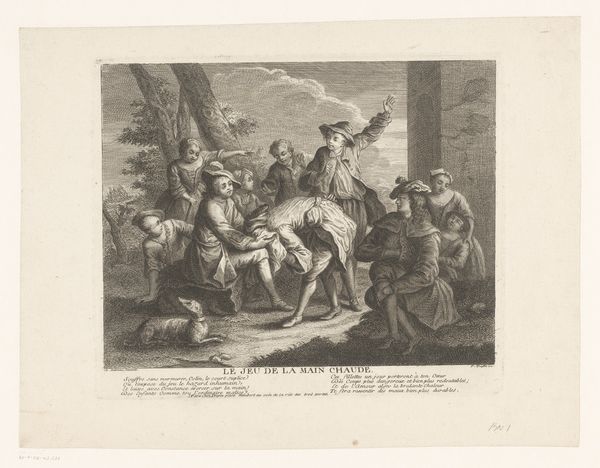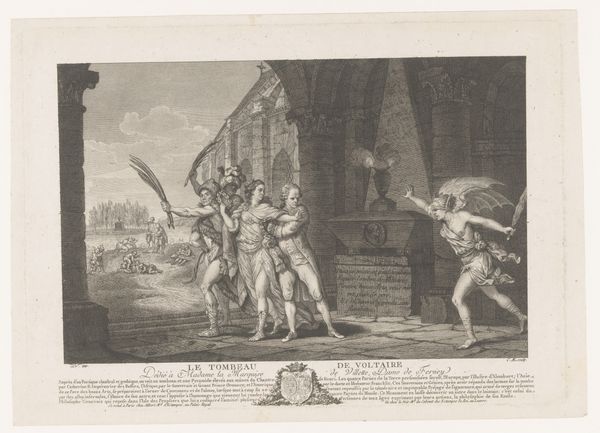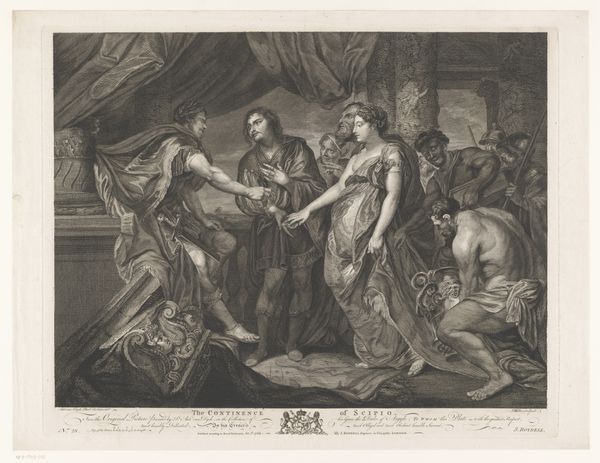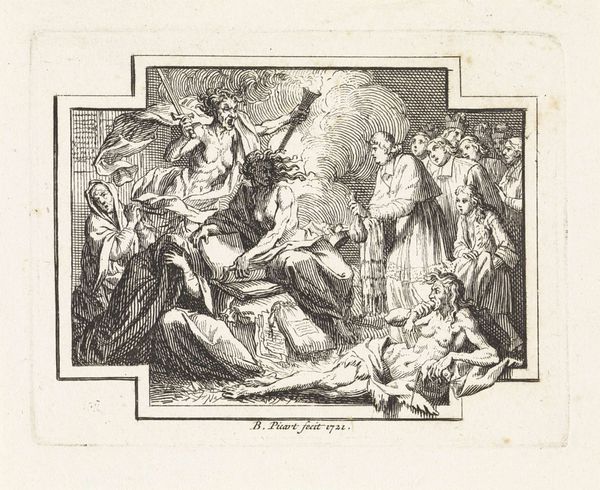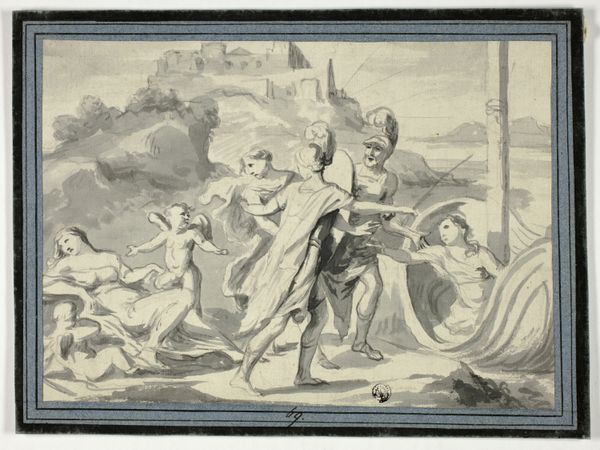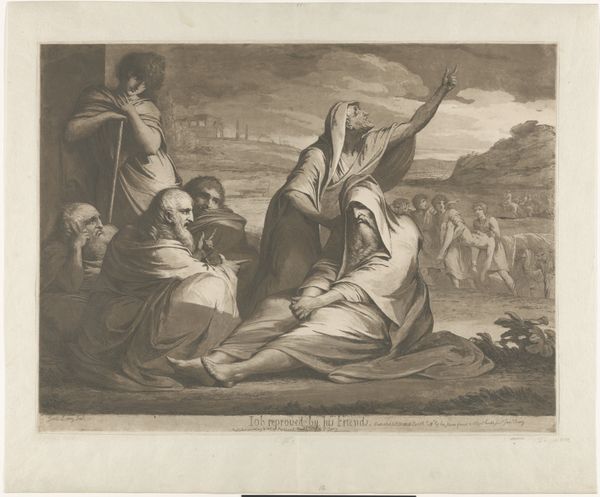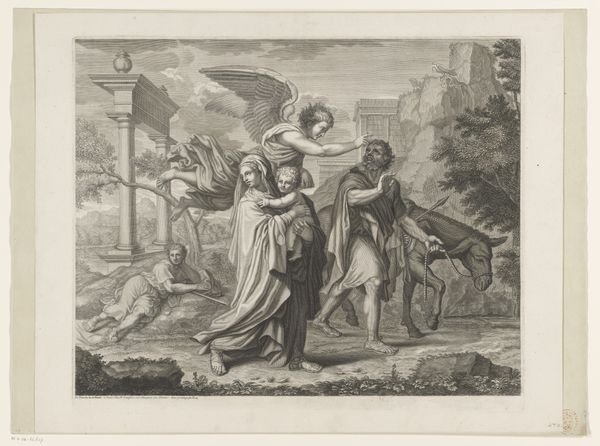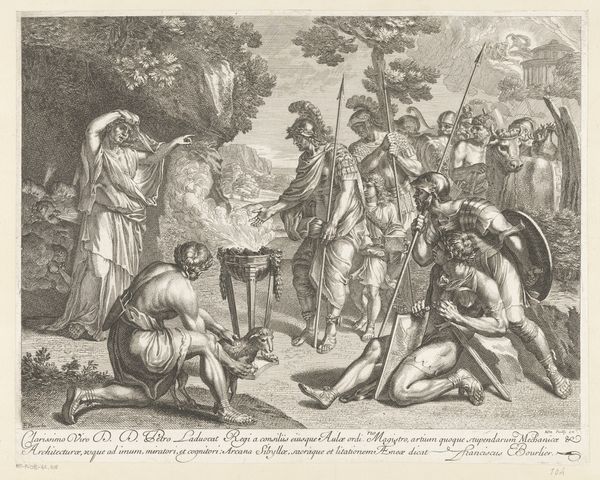
drawing, print, engraving
#
drawing
#
narrative-art
# print
#
figuration
#
soldier
#
history-painting
#
academic-art
#
engraving
Dimensions: Sheet: 10 1/2 x 12 1/16 in. (26.7 x 30.7 cm)
Copyright: Public Domain
Editor: We’re looking at "Storming a Banditti Stronghold," an engraving made in 1782 by Robert Blyth, after a drawing by Mortimer. It's full of frantic energy; the lines create a sense of chaos and violence. What do you make of the composition here? Curator: Observe how Blyth's precise lines delineate musculature and fabric with equal attention, thereby flattening the figures. This linearity, coupled with the shallow space, rejects the illusionism prized in earlier academic art. Do you notice how the receding lines of the architectural structure seem almost to tilt upwards, disrupting perspectival coherence? Editor: I do see that now. So, you're saying it's not about realism? Curator: Precisely. It's about the relationships of forms and the internal logic of the composition. Consider the dynamism achieved by the contrasting diagonals of the figures versus the more stable horizontals and verticals of the building. This generates visual tension, even a sense of instability. How do you think this use of line quality effects your perception of violence portrayed? Editor: That's interesting; the different types of lines highlight that action versus the stable built structure where it takes place. It is also very dramatic. The engraving highlights tonal variety through hatching and cross-hatching to create shade but this feels artificial rather than accurate and theatrical. The tonal scheme lends itself well to such subject matter. Curator: You've hit on something essential. It's in how Blyth has organised these figures relative to their landscape. His technique calls more attention to line, than modelling. Consider how his methods underscore the formal relationships that drive meaning in this scene. Editor: I see what you mean; it seems less about historical accuracy and more about using form to express a dynamic moment. I have a new appreciation of that. Curator: Yes. That is what Formalist interpretation allows: an exploration of relationships within the artistic expression, by close study.
Comments
No comments
Be the first to comment and join the conversation on the ultimate creative platform.
